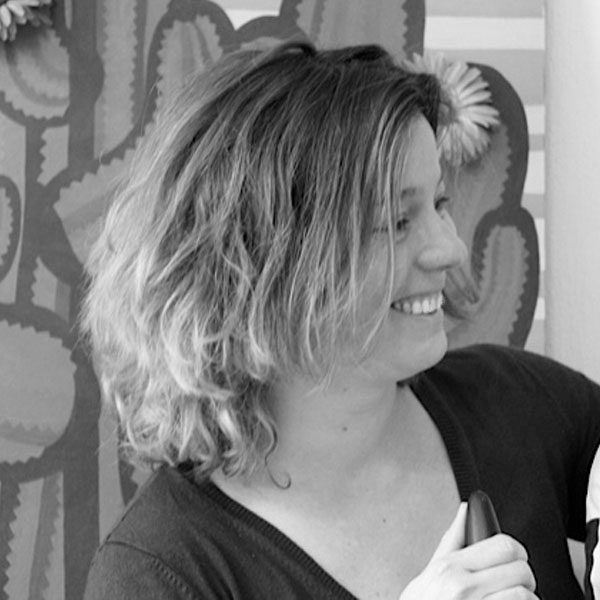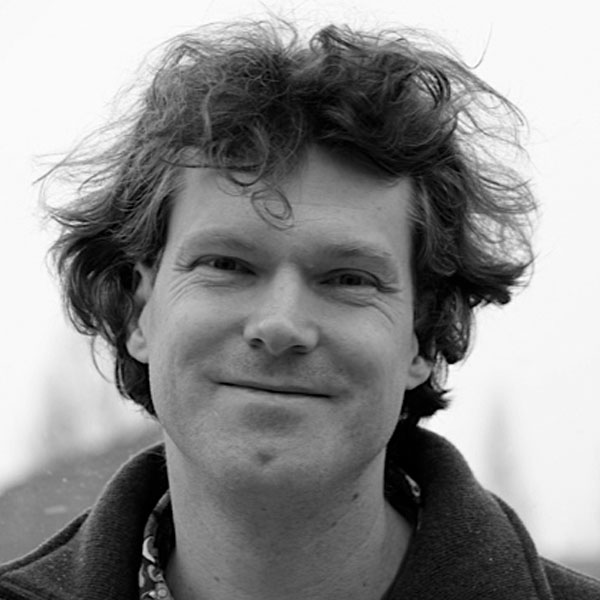HUNC
HUNC loves cities and city-life. Cities bring the talents of people together and contribute to an accelerated development and prosperity.
That’s why the studio develops designs and views to enrich the urban life so that more people can enjoy and benefit from the city. Architect Bart Cardinaal and multi-disciplinairy designer Nadine Roos are the founders of HUNC and under their positive and driven direction the studio works on urban interventions, architecture and interior designs. They work with a strong, clear and inviting signature to bring city-dwellers together and to improve their happiness.

Nadine Roos

Bart Cardinaal
Early years
Although Nadine doesn’t believe in all that supernatural stuff, she believes she was destined to become an artist. The day she was born her father predicted that she would either become an artist or a laboratory worker. As soon as she could hold a pen she started to draw. Her ambition at this early age already expended beyond the ordinary piece of paper and her parents white couch was in her eyes the perfect canvas. Her father being a teacher had plenty of red pens lying around and this resulted in her first rather expressive artwork.
Growing Up
Nadine grew up in Zoetermeer, a new town built with the optimism of the seventies. She lived in a neighbourhood with experimental maisonettes and it was a perfect safe place to endlessly play. Later when she was in her teens her parents had moved to a conventional terraced house. That was the time Nadine experienced the restrictive side of Zoetermeer. As the city was completely built according to a plan everything also seemed very predictable. This is how her fascination started for little things that happen in the streets on the border between private and public. It also was the beginning of her search how to make designs that will give the personal side of people a place in an urban environment where everything is standardized.
Studying
To figure out how to make the connection between the designed urban environment and the unpredictable Nadine decided to follow two studies. First she would start with Garden- and Landscape design and later she would continue studying at an art academy. During the first year she discovered that it would be wiser to start with the study Monumental design at the Royal Art Academy and to continue with the postgraduate study Designs of the surroundings, so she made the move and got accepted to the Academy with compliments. At the Art academy Nadine discovered she had a talent for a conceptual approach in design. Unfortunately not everything went according to plan, while studying the four year course at the Art academy the postgraduate study seized to exist. This asked for a plan B and the solution was found in the study Urban Design at the Academy of Architecture.
Tokyo
In the summer of 2003 Bart and Nadine visited the Venice Art Biennale and were amazed by an animation movie and the paintings by the Japanese artist Murakami. Their reaction was: if this work comes from Japan we have to go there. A year later Nadine quit her study at the Academy of Architecture and went together with Bart to live in Tokyo. Living in this crazy city accelerated Nadine’s personal growth. Inspired by the inventiveness of this city Bart and Nadine decided to go back to Rotterdam and to start their own office: formally called HUNK-design and today called HUNC.
HUNC
When they started their office, Bart and Nadine had already been designing together for years. Helping each other during their studies, graduation, competitions and exhibitions they knew they would make a perfect team. They share the same the same fascination for and the ambition to contribute to the urban environment. And Nadine’s father turned out to be a bit right on the laboratory worker part as well. She is not wearing a white coat at the office, but she sees cities as her laboratory.
Youth
Cranes in the background, bare pieces of land, mountains of sand and big pipes ready to go into the ground. They were ideal for Bart to play and to experience exciting adventures with. Bart grew up in Zoetermeer. A new-town which didn’t exist 15 years before his birth and which was fully in development when he was growing up.
But the empty plots got filled up with buildings. By the time Bart reached puberty Zoetermeer had become a well thought out city in which everything was neatly organized. Zoetermeer was at that time at its most boring; everything organized and without the stratification of older cities.
It became time to widen the horizon and to search for an environment that would challenge, that would energize and that would inspire.
New York
The first holiday without parents would have to be in a city the opposite of Zoetermeer. Together with 3 friends he went to New York. Because this was the place of their favourite music. All the famous spots in hip hop music videos had to be visited. They ate pickles at a pub on the lower East side because Fab 5 Freddy and the Beasty Boys had done so as well. With the book Subway Art in one hand and a photo-camera in the other, they visited all the graffiti halls of fame and studied the different handwritings. Of course, a visit to the Keith Haring Pop Shop was a priority. This holiday was tremendously inspiring. New York strengthened the wish to live in a city where people inspire each other to a higher creativity and productivity.
Studying
Based on this yearning to play a part in the design of the urban fabric and the experience of cities Bart went to study at the TU in Delft. Here he had to comb through thick books full of specific data. He learned the ratio between the number of houses and a supermarket in a neighbourhood. How many playgrounds would be needed and what would be the ideal proportion of green based on the number of built square meters.
To his surprise, he recognized that this data would exactly lead to cities like Zoetermeer. A formula that had proven to result in monotony and a lack of chemistry. Bart wanted to learn how to create a city you could fall in love with instead of a city where you fall asleep. That why, when the opportunity occurred, he went on a student exchange to Chicago.
Chicago
Extremes, that’s what would typify Chicago in the nineties. The city was fascinating and scary at the same time. During the day it would be buzzing between the skyscrapers with ambition. But at night the city would get a totally different appearance. After 7pm the city was deserted. Only rats, winos, and bums stayed behind.
Here he could experience what happens if a city isn’t designed from the drawing-board. Here it became visible what happens if a city, with a grid as an underlay, is left to the market.
The city was filled with warm and social people who gathered in communities. At the same time, it was a city of unparalleled segregation. Rich, poor, Hispanics, Polish people, and Afro-Americans, they all lived isolated from each other.
O.M.A. and Essen
After his graduation, Bart went to work at O.M.A.. At this office, he worked on the reallocation of the Kohlenwasche in the German city Essen. With the disappearance of the mining industry, this area became intoxicated by hopeless numbers of unemployment and depressing structural vacancies. For three years Bart worked intensely on the Kohlenwasche, one of the immense industrial complexes at the Zeche Zollverein. He witnessed the development of this place, from a place where gloominess dominated into a tourist attraction. The Kohlenwasche has regained its dignity by a reinforcing combination of old and new. This positivity has had a contagious affect on the city of Essen. When 6 years later The Flying Grass Carpet landed on the Willy Brandt Platz, you could clearly feel that the citizens of Essen had become proud of their city.
Tokyo
The next important experience Bart had was in Tokyo. Here, he and Nadine, lived for a year in the lively neighbourhood Shinjuku. The first thing that stood out was the intricately meshed structure. Just like Chicago this city hadn’t been designed from the drawing board. It followed the patterns of the old rice-fields as an underlay for the city. Hidden between narrow streets full with minuscule houses, were architectural gems and plastic construction kit houses without any aesthetic value. Tokyo’s tremendous liveliness has made a non-erasable impression. Most fascinating was the vertical density of the city. Restaurants are gathered on top of each other in the same building. In between it wouldn’t be strange to find a dentist and the optician could be on the top floor.
HUNC
With HUNC Bart is focused on the future. He uses his knowledge and experiences to create attractive cities. With his designs, he wants to make cities flexible. A city needs to be able to adapt to changing times. It needs to be adaptable to different speeds so it can evolve into a layered city. There must be a strong sense of community, where there is room for everybody to socially develop. The city must be a paradise for urbanites.
